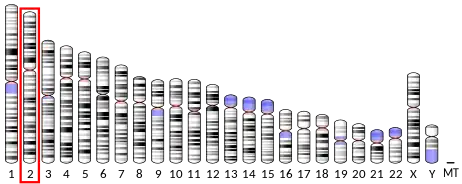| RNF144A | |||||||||||||||||||||||||||||||||||||||||||||||||||
|---|---|---|---|---|---|---|---|---|---|---|---|---|---|---|---|---|---|---|---|---|---|---|---|---|---|---|---|---|---|---|---|---|---|---|---|---|---|---|---|---|---|---|---|---|---|---|---|---|---|---|---|
| |||||||||||||||||||||||||||||||||||||||||||||||||||
| Identifiers | |||||||||||||||||||||||||||||||||||||||||||||||||||
| Aliases | RNF144A, RNF144, UBCE7IP4, ring finger protein 144A, hUIP4, UIP4 | ||||||||||||||||||||||||||||||||||||||||||||||||||
| External IDs | MGI: 1344401 HomoloGene: 40982 GeneCards: RNF144A | ||||||||||||||||||||||||||||||||||||||||||||||||||
| |||||||||||||||||||||||||||||||||||||||||||||||||||
| |||||||||||||||||||||||||||||||||||||||||||||||||||
| |||||||||||||||||||||||||||||||||||||||||||||||||||
| |||||||||||||||||||||||||||||||||||||||||||||||||||
| |||||||||||||||||||||||||||||||||||||||||||||||||||
| Wikidata | |||||||||||||||||||||||||||||||||||||||||||||||||||
| |||||||||||||||||||||||||||||||||||||||||||||||||||
RNF144A is an E3 ubiquitin ligase belonging to the RING-between RING (RBR) family of ubiquitin ligases, whose specific members have been shown to function as RING-HECT hybrid E3 ligases.[5][6][7] RNF144A is most closely related to RNF144B at the protein level, and the two proteins together comprise a subdomain within the RBR family of proteins.[8][9][10] The ubiquitin ligase activity of RNF144A catalyzes ubiquitin linkages at the K6-, K11- and K48- positions of ubiquitin in vitro, and is regulated by self-association through its transmembrane domain.[11][12]
The biological functions of RNF144A is/are relatively unknown beyond its intrinsic enzymatic activity. Somatic mutations of RNF144A have been catalogued in cancer genetic databases in several primary human tumors, including breast, stomach, lymphoma, glioblastoma, uterine and lung cancers. Other members of the RBR family have been associated with neurological and immunological diseases, most notably parkin, HOIL-1L and HOIP(RNF31).[13][14][15][16]
Current known substrates of RNF144A targeted for degradation are proteins involved in DNA repair, heatshock/chaperone function and signalling, consistent with the predominant association of this protein with cancer, and include (DNA-PKcs), PARP1, HSPA2, BMI1, and RAF1.[17][18][19][20][21]
See also
References
- 1 2 3 GRCh38: Ensembl release 89: ENSG00000151692 - Ensembl, May 2017
- 1 2 3 GRCm38: Ensembl release 89: ENSMUSG00000020642 - Ensembl, May 2017
- ↑ "Human PubMed Reference:". National Center for Biotechnology Information, U.S. National Library of Medicine.
- ↑ "Mouse PubMed Reference:". National Center for Biotechnology Information, U.S. National Library of Medicine.
- ↑ Wenzel DM, Lissounov A, Brzovic PS, Klevit RE (June 2011). "UBCH7 reactivity profile reveals parkin and HHARI to be RING/HECT hybrids". Nature. 474 (7349): 105–8. doi:10.1038/nature09966. PMC 3444301. PMID 21532592.
- ↑ "RNF144A ring finger protein 144A [Homo sapiens (human)] - Gene - NCBI". www.ncbi.nlm.nih.gov. National Center for Biotechnology Information, U.S. National Library of Medicine. Retrieved 2019-10-27.
- ↑ "RNF144A - E3 ubiquitin-protein ligase RNF144A - Homo sapiens (Human) - RNF144A gene & protein". www.uniprot.org. UniProt. Retrieved 2019-10-27.
- ↑ Dove KK, Klevit RE (November 2017). "RING-Between-RING E3 Ligases: Emerging Themes amid the Variations". Journal of Molecular Biology. 429 (22): 3363–3375. doi:10.1016/j.jmb.2017.08.008. PMC 5675740. PMID 28827147.
- ↑ Spratt DE, Walden H, Shaw GS (March 2014). "RBR E3 ubiquitin ligases: new structures, new insights, new questions". The Biochemical Journal. 458 (3): 421–37. doi:10.1042/BJ20140006. PMC 3940038. PMID 24576094.
- ↑ Eisenhaber B, Chumak N, Eisenhaber F, Hauser MT (2007). "The ring between ring fingers (RBR) protein family". Genome Biology. 8 (3): 209. doi:10.1186/gb-2007-8-3-209. PMC 1868946. PMID 17367545.
- ↑ Michel MA, Swatek KN, Hospenthal MK, Komander D (October 2017). "Ubiquitin Linkage-Specific Affimers Reveal Insights into K6-Linked Ubiquitin Signaling". Molecular Cell. 68 (1): 233–246.e5. doi:10.1016/j.molcel.2017.08.020. PMC 5640506. PMID 28943312.
- ↑ Ho SR, Lee YJ, Lin WC (September 2015). "Regulation of RNF144A E3 Ubiquitin Ligase Activity by Self-association through Its Transmembrane Domain". The Journal of Biological Chemistry. 290 (38): 23026–38. doi:10.1074/jbc.M115.645499. PMC 4645615. PMID 26216882.
- ↑ Pickrell AM, Youle RJ (January 2015). "The roles of PINK1, parkin, and mitochondrial fidelity in Parkinson's disease". Neuron. 85 (2): 257–73. doi:10.1016/j.neuron.2014.12.007. PMC 4764997. PMID 25611507.
- ↑ Oda H, Beck DB, Kuehn HS, Sampaio Moura N, Hoffmann P, Ibarra M, et al. (2019-03-18). "Second Case of HOIP Deficiency Expands Clinical Features and Defines Inflammatory Transcriptome Regulated by LUBAC". Frontiers in Immunology. 10: 479. doi:10.3389/fimmu.2019.00479. PMC 6431612. PMID 30936877.
- ↑ Boisson B, Laplantine E, Dobbs K, Cobat A, Tarantino N, Hazen M, et al. (June 2015). "Human HOIP and LUBAC deficiency underlies autoinflammation, immunodeficiency, amylopectinosis, and lymphangiectasia". The Journal of Experimental Medicine. 212 (6): 939–51. doi:10.1084/jem.20141130. PMC 4451137. PMID 26008899.
- ↑ Boisson B, Laplantine E, Prando C, Giliani S, Israelsson E, Xu Z, et al. (December 2012). "Immunodeficiency, autoinflammation and amylopectinosis in humans with inherited HOIL-1 and LUBAC deficiency". Nature Immunology. 13 (12): 1178–86. doi:10.1038/ni.2457. PMC 3514453. PMID 23104095.
- ↑ Ho SR, Mahanic CS, Lee YJ, Lin WC (July 2014). "RNF144A, an E3 ubiquitin ligase for DNA-PKcs, promotes apoptosis during DNA damage". Proceedings of the National Academy of Sciences of the United States of America. 111 (26): E2646-55. Bibcode:2014PNAS..111E2646H. doi:10.1073/pnas.1323107111. PMC 4084471. PMID 24979766.
- ↑ Zhang Y, Liao XH, Xie HY, Shao ZM, Li DQ (November 2017). "RBR-type E3 ubiquitin ligase RNF144A targets PARP1 for ubiquitin-dependent degradation and regulates PARP inhibitor sensitivity in breast cancer cells". Oncotarget. 8 (55): 94505–94518. doi:10.18632/oncotarget.21784. PMC 5706891. PMID 29212245.
- ↑ Yang YL, Zhang Y, Li DD, Zhang FL, Liu HY, Liao XH, et al. (August 2019). "RNF144A functions as a tumor suppressor in breast cancer through ubiquitin ligase activity-dependent regulation of stability and oncogenic functions of HSPA2". Cell Death and Differentiation. 27 (3): 1105–1118. doi:10.1038/s41418-019-0400-z. PMC 7205990. PMID 31406303.
- ↑ Jin X, Kim LJ, Wu Q, Wallace LC, Prager BC, Sanvoranart T, et al. (November 2017). "Targeting glioma stem cells through combined BMI1 and EZH2 inhibition". Nature Medicine. 23 (11): 1352–1361. doi:10.1038/nm.4415. PMC 5679732. PMID 29035367.
- ↑ Afzali B, Kim S, West E, Nova-Lamperti E, Cheru N, Nagashima H, et al. (2019-09-26). "RNF144A shapes the hierarchy of cytokine signaling to provide protective immunity against influenza". doi:10.1101/782680.
{{cite journal}}: Cite journal requires|journal=(help)



